Thu 8 May 2014
MIKE NEVINS Reviews Five Short Novels.
Posted by Steve under Columns , Obituaries / Deaths Noted , Reviews[3] Comments
by Francis M. Nevins
Having eaten up much of the past few weeks paginating the index for JUDGES & JUSTICE & LAWYERS & LAW, I must again rely on my dusty old files to provide raw material for this month’s column.
Lucky for me that my files are full of the stuff. In my salad days, beginning more than half a century ago, I got into the habit of writing for-my-eyes-only reviews not only of the full-length whodunits I read but also of the shorter works variously called short novels, novelettes, novellas and novellos, the last term coined by my beloved Harry Stephen Keeler, who probably pronounced the word with the accent on the first syllable.
From the hundred-odd paragraphs of comment on tales of this length that are moldering in my files I’ll exhume a few that strike me as not too uninteresting today.
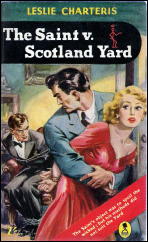
Of all the characters who appeared frequently in novellos during the Golden Age, the two who stand tallest are Nero Wolfe and Simon Templar. Among the pile of tales of this length which the young Leslie Charteris (1907-1993) wrote about his Saintly hero, one of my favorites is “The Inland Revenue†(The Thriller, 25 April 1931, as “The Masked Menaceâ€; collected under its better-known title in THE HOLY TERROR, Hodder & Stoughton 1932, and THE SAINT VS. SCOTLAND YARD, Doubleday Crime Club 1932), in which we follow Simon as he tries to raise enough money to pay his income tax by extorting it from a sinister mastermind calling himself the Scorpion.
It’s a preposterously tongue-in-cheek saga with an astoundingly unfair surprise ending, but Charteris carries it off with the help of the satiric wit and brashness that were his trademarks.
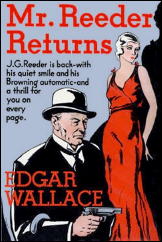
When Charteris launched his career, by far the most popular English mystery writer was Edgar Wallace (1875-1932), who produced novels, novellos and short stories faster than a rabbit can produce baby rabbits. One of the most rousing and richly plotted of his tales at the length we’re investigating today was “The Man from Sing Sing†(The Thriller, 7 February 1931; collected in THE GUV’NOR AND OTHER STORIES, Collins 1932, U.S. title MR. REEDER RETURNS, Doubleday Crime Club 1932).
The parlormaid of Mr. J.G. Reeder, perhaps Wallace’s best known series detective, leads her boss into a bizarre case involving a lost false mustache, a spectacular embezzlement, a murdered Eton lecturer and a fortune found in a haystack. Our sleuth connects these and other items with reasoning that runs the gamut from sketchy to non-existent, but Wallace scores with his dry wit, tantalizing plot, swift economy of movement, and loving depiction of English working-class mores.
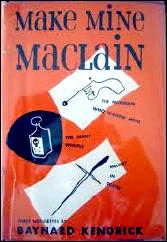
Baynard Kendrick (1894-1977) created more than one series sleuth but his signature character was the blind detective Captain Duncan Maclain. The captain debuted in 1937 and usually appeared in novels, but during the WWII years he also turned up in three novellos, collected after the war as MAKE MINE MACLAIN (Morrow, 1947).
I don’t have a copy of that book but I do own each of its component parts, and reread one of them recently to see if my opinion of it had changed since 1968. It hadn’t.
In “The Murderer Who Wanted More†(American Magazine, January 1944) one of the potential legatees of a Staten Island matriarch’s estate is shot to death during a fierce snowstorm while traveling on the post-midnight local train from the St. George ferry terminal to the end of the line at Tottenville to visit his dying mother. Both before and after that murder come several attempts on the life of another potential legatee, a lovely young artist who had recently painted Maclain’s dogs.
The captain’s key deduction is unconvincing and the motive Kendrick attributes to the killer shows that he didn’t know the first thing about the law of wills, but the Staten Island setting is unusual and vivid enough.
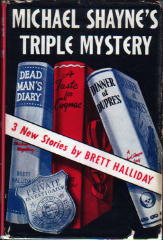
The earliest collections of Rex Stout’s Nero Wolfe novellos appeared in 1942 and 1944 but contained only two tales apiece. Most of Wolfe’s cases at that length appeared three to a book, but only after threesomes had been published featuring other sleuths including Duncan Maclain, as we’ve just seen, and Michael Shayne, the Miami-based PI created by Brett Halliday (1904-1977).
Fast, complex and professional are the words for “Dinner at Dupre’s†(Mystery Book Magazine, September 1946; collected in MICHAEL SHAYNE’S TRIPLE MYSTERY, Ziff-Davis 1948), in which Mike’s search for the murderer of a prospective client leads him to the hamlet of Cheepwee, Louisiana and a temptingly described Southern dinner with a nymphomaniac who has a new angle on the bigamy racket.
Brisk pace, shrewd plotting, an honest if not startling solution, and minimal self-conscious toughness prompted me a few generations ago to give this one very high marks.
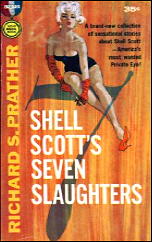
Now we tackle a work actually written not too long before I began to set down some of these scribbles. Richard S. Prather (1921-2007) didn’t turn out a slew of novellos about his quintessentially cool PI Shell Scott, but the few he did were among the joys of my late teens.
Take for instance “Babes, Bodies and Bullets†(Cavalier, April 1958; collected in SHELL SCOTT’S SEVEN SLAUGHTERS, Fawcett Gold Medal pb #S1072, 1961). Hired to solve a Beverly Hills attorney’s murder, which he witnessed, Scott runs into a gaggle of gruesome gangsters, an assortment of luscious wenches and a mounting heap of corpses.
The plot is sorta thin, but Prather’s feel for action and tempo and his wild-and-woolly prose, plus a sequence of gruesome horseplay in an underworld hospital, lift this novello to the top of the heap.
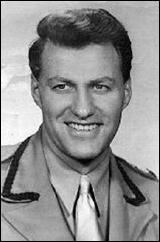
May I stray from the month’s topic for a moment? The last living actor to portray Ellery Queen in any national medium died on March 12, a few weeks short of his 100th birthday. Richard Coogan was best known for TV work — starring in the early live sci-fi series CAPTAIN VIDEO, having a long-running role in the daytime soap LOVE OF LIFE, playing Marshal Matt Wayne on the Western series THE CALIFORNIANS — but he began his career in radio and portrayed Ellery during late 1946 and early ‘47.
Anthony Boucher, who at that time was collaborating on the weekly scripts with EQ co-creator Manfred B. Lee, described Coogan’s performance in a letter to Lee (25 October 1946) as “not quite so smug†as his predecessor’s. Coogan’s main interest in his twilight years was golf. He was in his mid-nineties when I talked with him over the phone in connection with my book ELLERY QUEEN: THE ART OF DETECTION, but he struck me as in amazingly good health, and anyone who checks out his reminiscences of CAPTAIN VIDEO on YouTube, which date from roughly the same time, will surely get the same impression. May we all live so long and well.
May 8th, 2014 at 4:37 pm
I’ve always thought the novella was the ideal length for the mystery. Quite a few did terrific work at this length including all the top notch stories above as well as much of Gardner’s early work, Kelly Roos, Philip Wylie, Ellery Queen, Craig Rice and Stuart Palmer, Woolrich, and no few others.
Back in the eighties there was an attempt to reprint a series comprised of novellas that ran four or five volumes before disappearing.
The death of the slicks really killed the form as that was one of the chief markets.
May 8th, 2014 at 6:39 pm
Speaking of Richard Coogan, just before leaving for the Windy City Pulp convention a few days ago, Scott Hartshorn, an old friend and lover of film noir, was at my house. We decided to watch a film noir, as we usually do, and I spent some time thinking about which noir would be the most bizarre and crazy.
The one I picked was GIRL ON THE RUN(1953),a sleazy B-movie taking place in a carnival. Richard Coogan played the hero and his girlfriend played one of the carny dancers, who wore great costumes with masks.
The dvd can be bought in a Something Weird box set called WEIRD NOIR. It’s a must see and google shows several links about the film, including a clip on you tube. It gets my highest recommendation.
May 9th, 2014 at 9:49 am
Re “The Inland Revenue”
“It’s a preposterously tongue-in-cheek saga with an astoundingly unfair surprise ending, but Charteris carries it off with the help of the satiric wit and brashness that were his trademarks.”
That sums it up nicely. I can only agree, 100%!